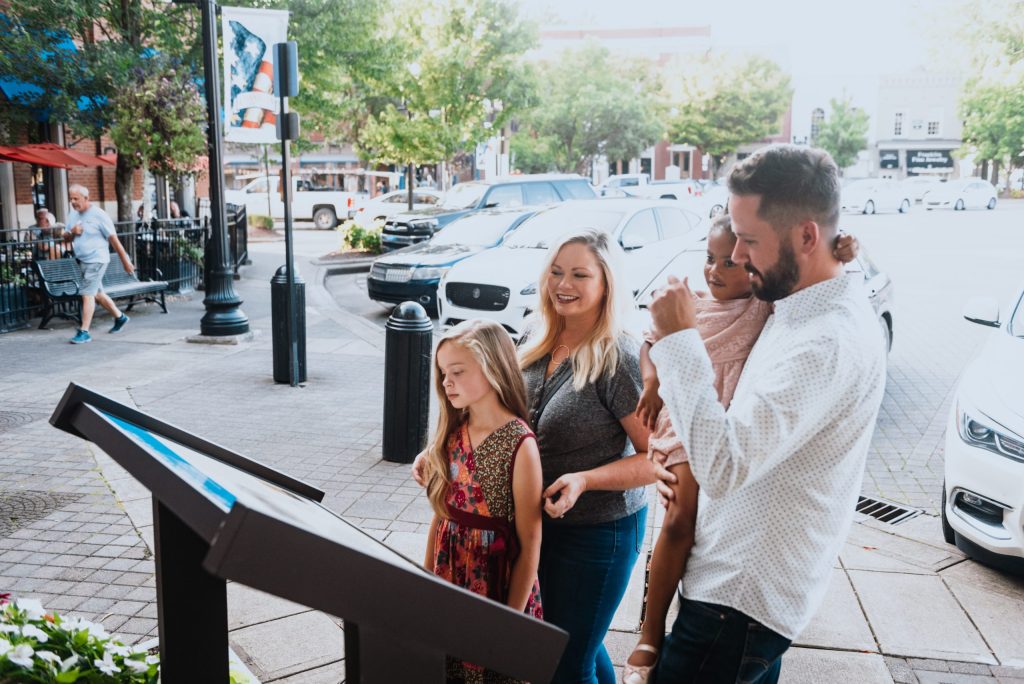Just a few minutes from Franklin in picturesque Spring Hill, a Greek Revival-style estate called Rippa Villa sits on 98 acres of pastoral farmland. Built in the mid-1850s by Nat Cheairs, the plantation was farmed and maintained by scores of enslaved people until their emancipation after the Civil War. For decades, the lives of those enslaved at Rippa Villa were minimized, romanticized, or altogether eliminated from public tours.
In recent years, however, Williamson County leaders have banded together to tell what they call The Fuller Story, working to include African American stories in the history of Franklin and its surrounding communities. They’ve placed historical markers throughout the county that highlight both the suffering and achievements of the area’s African American population; in 2021, one of those markers was placed on the grounds of Rippa Villa.
The Battle of Franklin Trust, which manages Rippa Villa as well as Carnton and the Carter House in Franklin, has also been working to incorporate the stories of the historic sites’ enslaved African Americans into tours and interpretive exhibits. “We came in with a very distinct objective to try and figure out as much as we could about the enslaved people that were here,” explains Kristi Farrow, BOFT’s Director of African and African American History. “It was a slow process because nothing had ever really been done before to research the enslaved people. Our first objective was to get a list of names and try to find everyone on census records – basic searches that you do with any family tree.”
Once Farrow and a co-worker had compiled a list of names, they went on a road trip to get more information. “We went to Washington D.C. and sat for two days going through pension applications of U.S. Colored Troop Soldiers,” she says.
The applications they found contained a treasure trove of information. African American soldiers had to provide proof of their identities in order to receive a pension, so many of the applications included detailed letters from witnesses containing important details about the soldiers’ lives and personal histories.
“Sometimes we would get one that was ten pages and then we would get one that was 500 pages,” Farrow recalls. “And we had to sit and pore through every page.” Sometimes, Farrow realized she was the first person to open the application, well over a century later. It’s an experience she says she’ll never forget.
From the eyewitness accounts contained in the pension applications, Farrow has been able to add important context and perspective to the story of life at Rippa Villa. “A lot of people wouldn’t think that the depth of information that we’ve been able to find is even possible,” she says, “but I can now tell you that there was a slave married in the dining room. He joined the Union Army’s U.S. Colored Troops and then came back, married the children’s nurse, and took her off to war with him.” Thanks to the documents, Farrow even knows that one of the Cheairs’ children cried throughout the ceremony because she didn’t want her nurse to leave.
The marriage is just one of many stories researchers have recently learned about the enslaved people at Rippa Villa; more are being discovered all the time and subsequently added to the information tour guides receive about the plantation. The goal is for the stories of Rippa Villa’s enslaved residents to be seamlessly woven into the narrative that’s shared with the public, right alongside the lives of its white residents – just as their lives and experiences were intertwined back in the mid-1850s.
Visitors to Rippa Villa can take a guided tour of the home, which includes some of these stories, and explore the grounds and outbuildings as well. The tour lasts about an hour and departs every 30 to 40 minutes.
For those who have a specific interest in hearing details about the lives of the enslaved at Rippa Villa, a special tour is offered at 10 a.m., Monday through Friday. The tour takes about 90 minutes.









